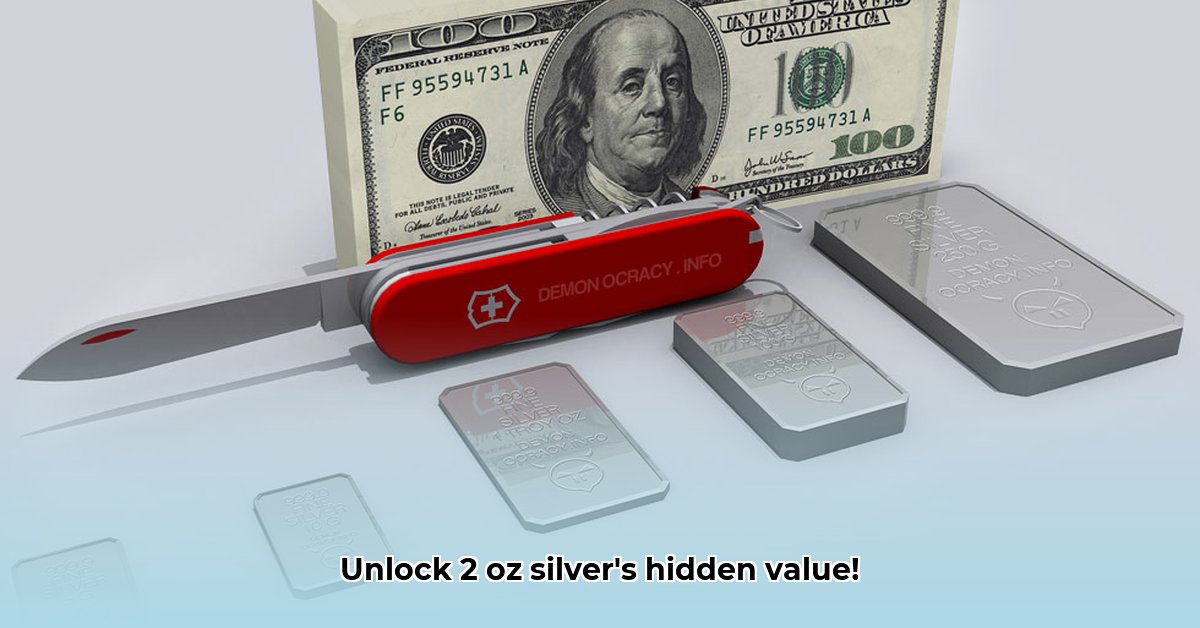
Determining the precise value of 2 ounces of silver isn't a simple calculation; it depends on several crucial factors. This guide provides a step-by-step process to help you arrive at a more accurate valuation. For understanding volatile market values, see this guide on Bitcoin valuation.
Understanding the Factors Affecting Silver Value
The price of 2 ounces of silver isn't just about weight; it's a complex interplay of several elements. Let's explore these critical components to get a realistic estimate of its worth.
Silver Purity: The Fineness Factor
Silver's purity, expressed as "fineness," significantly impacts its value. Pure silver is typically marked ".999 fine," indicating 99.9% purity. Sterling silver, commonly used in jewelry, is usually .925 fine (92.5% pure). The higher the purity, the more valuable your silver will be. A lower purity means less actual silver content and thus a lower worth.
The Dynamic Silver Market: Price Fluctuations
The silver market is highly volatile. Daily price fluctuations are influenced by global economic trends, investor sentiment, industrial demand, and geopolitical events. To find the current spot price (the price per troy ounce of pure silver), consult reputable financial websites. These sites provide real-time data, essential for accurate valuation.
Did you know that silver prices can fluctuate by several percentage points in a single day? This volatility makes it essential to use the most current market information available.
Beyond Spot Price: Real-World Considerations
Online calculators often only consider the spot price and weight, drastically oversimplifying the calculation. Real-world buyers (jewelers, coin dealers, precious metal refiners) will factor in several additional factors, including:
- Refiner fees: These fees cover assaying (testing purity) and processing your silver. The larger the volume of silver, the lower the proportional refiner fees will likely be.
- Buyer's margins: Buyers need to make a profit, so they'll offer a price slightly below the spot price. The larger the volume of silver, the higher proportion of the spot price the buyer might offer.
- Taxes: You may need to pay taxes on any profit from selling your silver.
These crucial aspects aren't reflected in basic online calculators.
Calculating the Value: A Step-by-Step Guide
To get a relatively accurate figure, follow these six steps:
- Find the current spot price: Use a reputable financial website to find the current spot price of silver per troy ounce.
- Determine the weight: Accurately weigh your silver in troy ounces (using a jeweler’s scale is recommended for precision).
- Identify the fineness: Look for purity markings (.999, .925, etc.) on your silver items. You may need additional professional assistance to determine the fineness if the markings aren’t clear.
- Calculate the pure silver weight: Multiply the weight (in troy ounces) by the fineness (expressed as a decimal, e.g., 0.999 for .999 fine). For example: 2 ounces x 0.925 = 1.85 ounces of pure silver.
- Estimate the value before fees: Multiply the pure silver weight by the current spot price.
- Obtain multiple quotes: Contact multiple buyers (pawn shops, jewelers, refiners, etc.) to get quotes. Compare these offers, factoring in stated fees, to determine the most beneficial option.
Example: If the spot price is $25 per troy ounce, and you have 2 ounces of .999 fine silver, the pre-fee calculation would be: 2 oz x 0.999 x $25/oz = $49.95. However, remember that refining and buyer's margins will reduce this final amount.
Why Simple Online Calculators Fall Short
Basic silver calculators fail to account for the nuances of real-world transactions. They lack the sophistication to incorporate crucial factors like refiner fees, buyer's margins, and the condition or collectible value of your silver. Always seek multiple quotes from reputable buyers to ensure you receive a fair price.
Additional Factors to Consider
- Condition: The condition of your silver influences its value. Damaged or tarnished silver often commands a lower price.
- Collectible value: Some silver items, such as antique coins or unique jewelry, may have a higher value than their bullion content alone.
By considering all these factors and obtaining multiple quotes, you'll be far better prepared to determine the true worth of your 2 ounces of silver. Remember, the silver market is dynamic, so regular checking of the spot price is essential for up-to-date valuation.